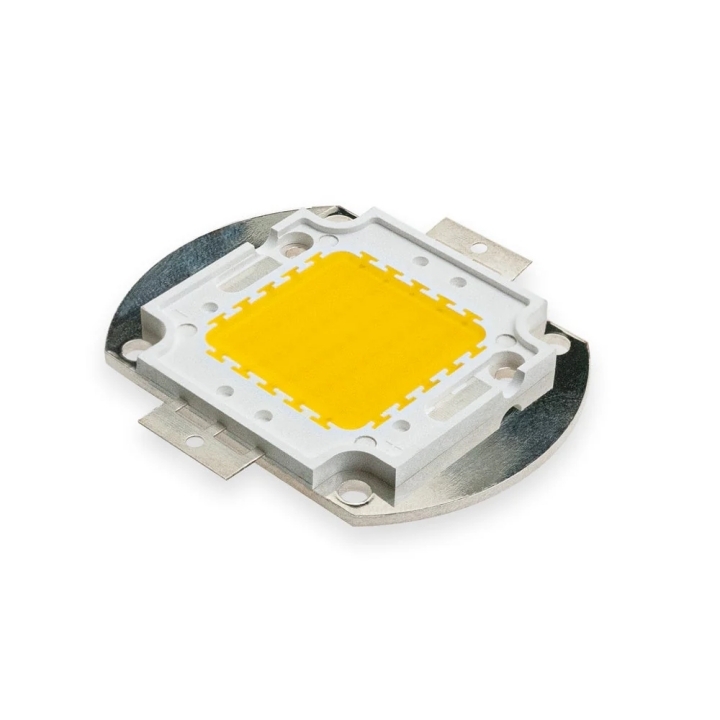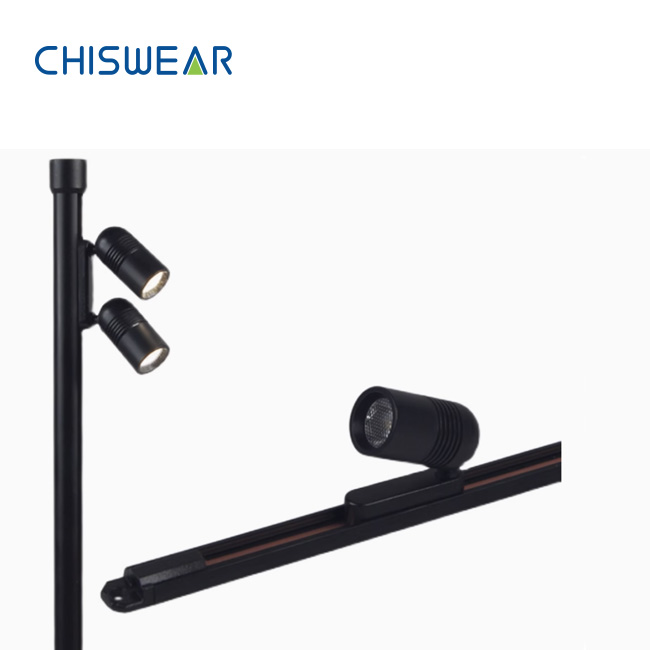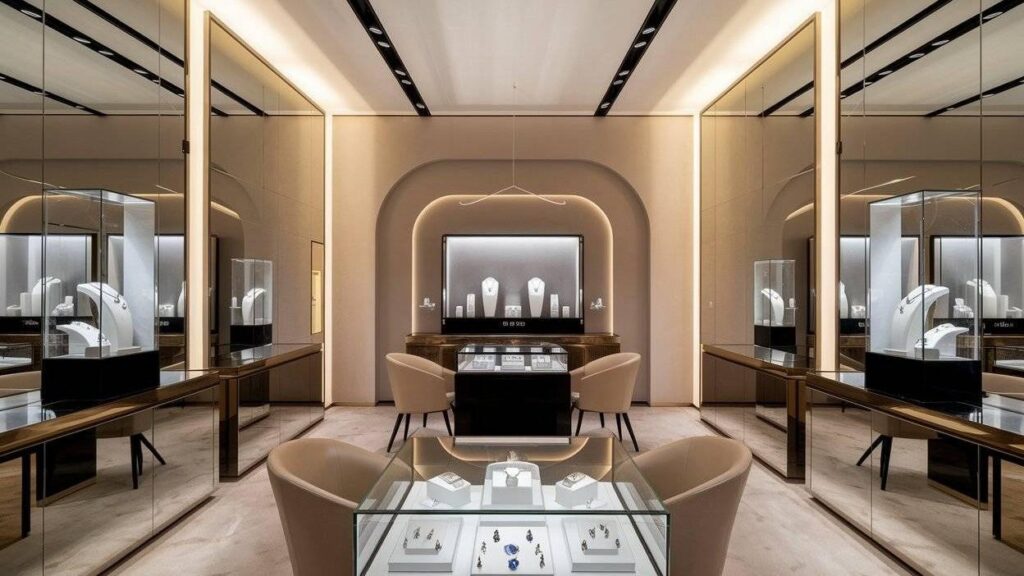Introduction
Have you ever wondered why a tiny mini showcase track lighting fixture might cost more than a regular ceiling bulb? While it may look simple, the truth is, these lighting solutions are anything but basic. High-end LED showcase lighting is a finely tuned combination of technology, craftsmanship, and purpose-driven design. In this article, we unravel the hidden story behind the price tag, showing how each component—from advanced chips to customized poles—contributes to the final cost.

What Makes Advanced LED Technology So Expensive?
When you step into a luxury boutique or art gallery and notice how every piece shines flawlessly, it’s not just by chance—it’s precision. That level of lighting accuracy starts with the LED chips themselves.
Precision starts at the core—with the LED chip.
High-quality LED jewelry lighting like the kind used in luxury displays often features branded LED chips like OSRAM or CREE. Why? Because these chips deliver exceptional Color Rendering Index (CRI) values, sometimes as high as Ra95–Ra97, making colors appear more natural and vivid.
| Feature | High-End LED Chips | Regular LED Chips |
| CRI Rating | Ra95–Ra97 | Ra80–Ra85 |
| Lifespan | 50,000–70,000 hours | 10,000–20,000 hours |
| Efficiency | High (More lumens per watt) | Medium |
| Heat Output | Low | Medium to High |
But it’s not just about color.
High-end LEDs are also incredibly efficient and long-lasting. They consume less power while producing consistent brightness across their entire lifespan. These factors reduce long-term costs but increase upfront prices because better components cost more.
Need professional-quality lighting with high CRI and long life? Check out our LED showcase lighting solutions.
Why Do Materials Like Aluminum and ABS Plastic Raise the Price?
It’s easy to think that the body of the light doesn’t matter much. But in high-end display lighting, the choice of materials makes all the difference—especially when it comes to performance and reliability.
You may be thinking, “Isn’t this just a light? Why does the body material matter so much?”
Well, the materials affect performance and longevity.
Most mini magnetic showcase track lighting systems use aluminum for the body. Aluminum acts as a heat sink by pulling heat away from the LED chip. It keeps the chip from getting too hot. This prevents damage and helps the fixture last longer.

ABS plastic is another key material, usually used in the base or connector parts. It is strong, light, and can take rough knocks in stores.
| Material | Benefit | Common Usage |
| Aluminum | Excellent heat dissipation | Fixture housing |
| ABS Plastic | Shock resistance, lightweight | Fixture base, joints |
Why is heat dissipation such a big deal? When LED chips overheat, their brightness fades quickly and they fail early. Aluminum solves that problem quietly, effectively.
Want to see how materials impact real-world performance? Explore our Mini magnetic showcase track lighting to see the difference.
How Does Customization Add to the Cost?
Imagine walking into a boutique and noticing the lighting perfectly matches the decor, subtly highlighting only the items that matter. That effect doesn’t come off-the-shelf—it’s designed.
Let’s say you want a light that fits your brand. Not just any light—but one with a specific beam angle, color temperature, and sleek finish.
This is where customization comes in.
High-end magnetic showcase track pole lighting allows you to tailor almost every aspect of the fixture:
- Beam angle (from 10° to 60°) to direct light precisely
- Color temperature (3000K, 4000K, 6000K) to match the mood
- Custom finishes (black, white, silver) to blend with your brand aesthetic
- Logo printing for a premium feel
All these options require extra engineering, mold adjustments, and small-batch manufacturing—which drive up the price.
| Custom Option | Effect | Added Value |
| Beam Angle Control | Directs light precisely | Focused illumination |
| Color Temperature Choice | Sets ambiance | Enhanced visual appeal |
| Finish Selection | Matches decor | Seamless design |
Customization means you’re not getting a one-size-fits-all product. You’re getting lighting that complements your exact space and enhances your display.

What Role Does Market Niche and Application Play in Pricing?
Not all lighting markets are created equal. The demands of a jewelry store or museum are entirely different from those of a general office or home.
Why are magnetic track lights for jewelry more expensive than, say, office lighting?
Because the stakes are higher.
Museums, jewelry stores, and exhibitions demand lighting that performs both functionally and artistically. Light needs to:
- Accurately render colors.
- Focus on details without creating heat.
- Blend seamlessly into premium retail setups.
This niche demand gives manufacturers a reason to use only the best materials, offer deep customization, and keep production quality high.
Also, these aren’t mass-produced in the millions. Limited production = higher cost per unit.
How Do Manufacturing Standards and Precision Engineering Influence Price?
If you think assembling a high-end jewelry display showcase lighting fixture is like putting together a regular bulb, think again.
Creating these lights involves:
- Tight tolerances during assembly.
- Clean wiring to avoid signal loss or heat pockets.
- Advanced thermal management.
- Quality inspection for every single unit.
Even a single flaw can result in color distortion or failure under continuous use. That’s why precision engineering is non-negotiable. It ensures the light performs consistently and safely over its full lifespan.
You’re not just paying for light. You’re paying for precision-built technology that works flawlessly for years.

Why Is Investing in High-End Display Lighting Worth It?
Let’s face it—mini LED pole lighting isn’t cheap. But that’s for good reason.
Still thinking, “Can’t I just buy a cheap light online?”
Sure, but here’s what you risk:
| Cheap Lighting | High-End Lighting |
| Inconsistent brightness | Uniform, clean output |
| Low CRI (dull colors) | High CRI (vibrant, true-to-life tones) |
| Short lifespan (months) | Long lifespan (years) |
| Poor heat management | Advanced thermal design |
Cheap lighting might save money upfront but costs more over time—in replacements, repairs, and missed visual appeal.
Think of mini LED pole lighting as an investment. It’s not just about making your product visible—it’s about making it unforgettable.
Conclusion
This little spotlight has years of research and development behind it. It uses top technology and high-quality materials. Each unit is hand-checked for quality. When it comes to elevating your retail space or exhibit, investing in professional magnetic track lighting is more than worth the cost.
At LightrixTech, we provide a wide range of customizable, high-performance display lighting options tailored for jewelry, museums, and exhibitions. Let your display shine the way it was meant to.
External Links:





